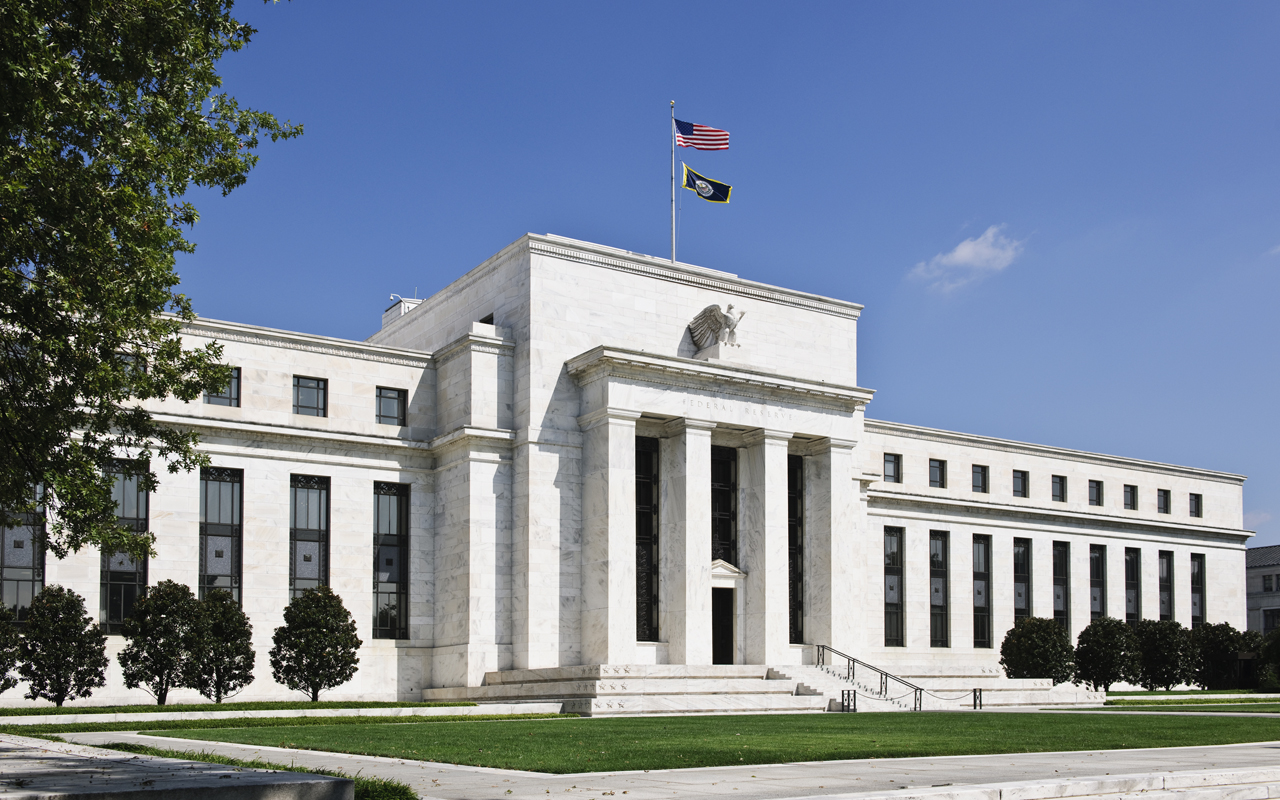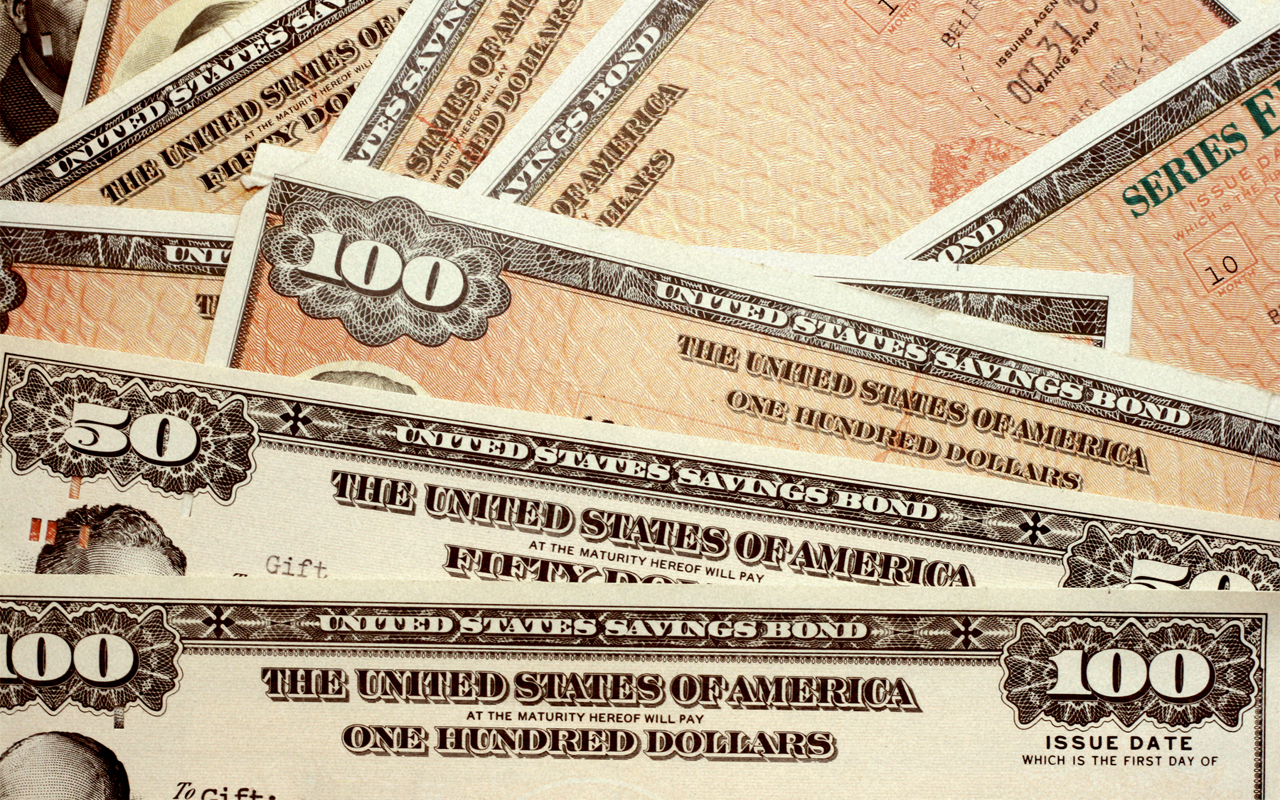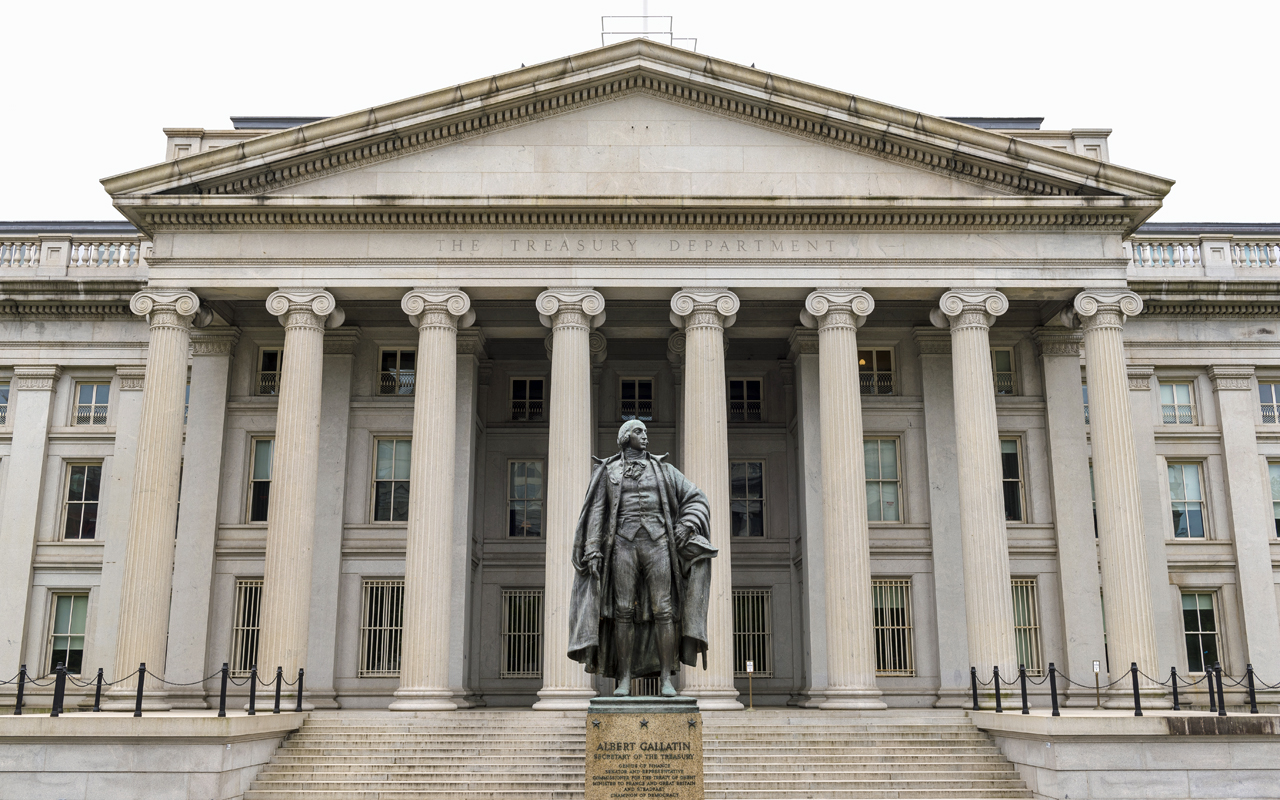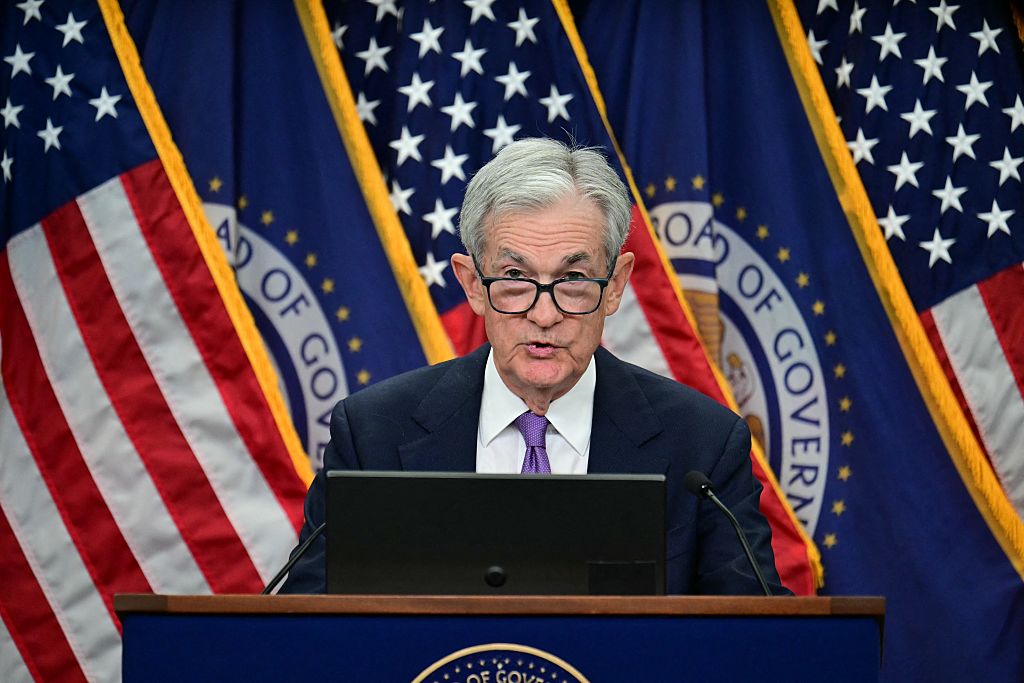6 Ways to Beat Rising Interest Rates


Even if you have been an investor for 30 years, you don’t really know about high interest rates.
U.S. interest rates peaked in October 1981, when the 30-year Treasury bond traded at 15%. The dream, when I started investing later that decade, was of “hat-sized yields” of 6%-7%, which didn’t become the norm until the early 1990s.
Today, interest rates are less than half that. Early in 2018, the rate on the 30-year Treasury stood around 2.7%. By mid-February, the yield on that long-term debt had spiked about 15% to around 3.1%, which is roughly where it trades today.
Investors panicked at the time, and higher interest rates still have investors worried. For good reason. After all, higher interest rates make bonds more competitive with some dividend stocks, and perhaps more importantly, they make borrowing more expensive for corporations, eating into the bottom line.
The Federal Reserve has already raised its benchmark rate once this year, is about to do so a second time and is expected to hike interest rates once or even twice more before 2018. Your portfolio could well feel the shockwaves from these actions – though you can minimize the damage by taking a few actions. Here are six techniques suggested by money managers.

Think Short-Term
You can find steady (albeit modest) income at the very short end of the yield curve.
Right now, major brokers are selling 3-month certificates of deposit that pay interest of about 2%. And the Vanguard Short-Term Bond ETF (BSV) of one- to five-year U.S. government, corporate and international bonds yields 2.8%.
Aash Shah – a senior portfolio manager for Summit Global Investments in Bountiful, Utah – says big investors can build a “ladder” of short-term bonds spanning three and six months, as well as one and two years, held to maturity. When bonds mature, they can be rolled into longer-term instruments, whose rates will have increased.
James Demmert – management partner at Main Street Research, a wealth management firm in Sausalito, California, agrees. As interest rates rise, buy individual bonds with maturities of just one to five years. Bond mutual funds and exchange-traded funds don’t have maturity dates, as bonds do, “and will continue to decline as rates rise.” But proceeds from individual bonds can be reinvested at higher rates.
Kate Warne, investment strategist at Edward Jones in St. Louis, expects the Federal Reserve to raise short-term interest rates quickly if inflation accelerates. “If you have more in short-term bonds, you can reinvest as those bonds mature and benefit as interest rates rise,” she says.

Treasury Inflation Protected Securities (TIPS)
A special type of asset pays investors more automatically as interest rates rise.
Treasury Inflation Protected Securities (TIPS) were first issued in 1997, and are now available at maturities of five, 10 and 30 years. These securities pay income twice a year that rises with inflation and decreases with deflation. Moreover, at maturity, you’re paid the greater of the original principal or the principal adjusted for inflation.
“Remember what a corrosive impact inflation has on wealth,” says Erik Davidson, chief investment officer for Wells Fargo Private Bank in Chicago. “Even at today’s levels, add taxes to inflation and you have to earn 4%-5%” just to break even. TIPS can help maintain a portfolio’s value as rates rise, he says.
If you’re looking for similar flexibility, David Thomas, senior investment management consultant for Equitas Capital in New Orleans, says you can also buy private instruments with floating rates. Such “floating-rate corporates” will benefit if interest rates rise, he says. ETF such as the iShares Floating Rate Bond ETF (FLOT) provide such exposure.
J.J. Feldman, a portfolio manager with Miracle Mile Advisors in Los Angeles, specifically suggests the Guggenheim Floating Rate Strategies (GIFAX) mutual fund, which puts at least 80% of its net assets in floating-rate instruments and has a four-star rating from Morningstar.

Cash and Gold
Many portfolio managers suggest holding some cash – an emergency fund that lets you take advantage of opportunities, as with the market’s February volatility. Some also value gold.
Graham Summers – president and chief market strategist of Phoenix Capital Research in Alexandria, Virginia, and author of The Everything Bubble – warns that if interest rates really take off, it could create a debt bubble 10 times bigger than the one that caused the Great Recession. If that happens, the best place for you to be, he suggests, is in cash or gold. He wrote for Gold-Eagle that the early February market selloff was stopped only by central bank intervention.
“No one says you must put capital to work,” he says. “Sometimes you just need to protect yourself and wait for the smoke to clear.”
Charles Thorngren – CEO of Pasadena, California-based Noble Gold Investments, which sells gold-backed retirement accounts – says that even with inflation of 2%, 60% of your investment power is lost to inflation during any 30-year career.
“Investing in precious metals ensures portfolio diversification and protects purchasing power when the dollar is weak,” he says. Gold and other precious metals act as a hedge against currency risks. “Currency valuations change over time. Precious metals offset the negative effects.”
In addition to gold, silver, platinum, aluminum and palladium all hold up well when inflation is high, says Jeff Carbone, managing partner for Cornerstone Wealth in Charlotte, North Carolina. “A fund that has a nice diversification of commodities” can be a good hedge against inflation, he suggests.

Dividend Stocks
Dividend stocks, like bonds, deliver regular income to holders. Their advantage? They can grow their payouts over time, and they typically have much more potential for capital gains.
Thomas of Equitas Capital notes that some a few traditional stocks, such as AT&T (T) and Ford (F), currently pay dividends around or above 5% – still significantly better than on offer from U.S. and most corporate investment-grade debt.
But it’s not all about current yield. Clorox (CLX), for instance, yields just 2.7% at the moment on a 96-cent quarterly payout. However, 10 years ago, that dividend was just 40 cents. If you bought at around $57 a decade ago, you’re enjoying a 6.7% yield on your original investment – plus, your asset value has more than doubled. The iShares 7-10 Year Treasury Bond ETF (IEF) fund of medium-term bonds is up just 17% in that time.
Wells Fargo’s Davidson says rising dividends are a great hedge against inflation. “Look for consumer-related stocks that benefit from pricing power” such as Clorox, he says, or those involved in commodities.
“They never raise the coupon of a bond,” Thomas adds. “They may call your bond and try to sell you a lower rate” when interest rates fall. You don’t necessarily have that problem with dividend stocks – though there is the risk of a dividend cut such as what General Electric (GE) implemented in November 2017.

ETFs for Every Occasion
Exchange-traded funds are like mutual funds in that they hold large baskets of assets, such as stocks and bonds. However, unlike mutual funds, they trade on exchanges and can be bought and sold just like stocks, with prices that change throughout the day. And several financial advisors love ETFs as a way to execute the previously discussed strategies without buying individual stocks or bonds.
Michael Windle – a financial advisor with C. Curtis Financial Group in Plymouth, Michigan – says ETFs “can be a great way to get the diversity that you see in a mutual fund with more liquidity and much lower fees.”
“In a market such as we are seeing now, ETFs are going to be a great option for many investors and can help limit some downside potential while capturing growth in the sectors and asset classes that are performing,” he says.
Shah, of Summit Global Investments, says commodity ETFs such as the Invesco DB Commodity Index Tracking Fund (DBC) provide diversified exposure to commodities, and that “rising inflation is typically good for commodity ETFs.”
You can also invest in short-term bond funds such as the aforementioned BSV or the iShares 1-3 Year Treasury Bond ETF (SHY). Looking for dividend growth? Consider ETFs such as the Vanguard Dividend Appreciation ETF (VIG) or the ProShares S&P 500 Dividend Aristocrats ETF (NOBL) – the latter of which holds companies that have increased their dividends each year for at least a quarter of a century.
Just one warning: Carbone of Cornerstone Wealth agrees that “ETFs control costs,” but they don’t pick-and-choose. They invest across an asset class, buying a group’s dogs as well as its stars.

Stay Diversified
The market hasn’t fully recovered from the February selloff, and in fact technically remains in correction territory. However, the major indices have clawed back at least some of those losses and are even sporting modest gains for the year-to-date.
That said, the economic picture remains mixed. Most of the analysts interviewed expected only modest increases in interest rates for the rest of 2018. The U.S. and several trading partners are announcing tariffs and retaliatory tariffs as the world seemingly crawls toward an extended trade war. Oil is on the rise, but unused global capacity is at least helping to keep energy in check.
For that reason, the most common advice by advisers was to stay diversified – in other words, don’t put all your eggs in one basket. Hold baskets of stocks, bonds, commodities and even a little cash – don’t go all-in on any one thing.
That doesn’t mean you should target a perfect balance. A few overweights make sense.
Craig Birk – executive vice president of Portfolio Management at Personal Capital, a San Francisco investment advisor – says adjustments to make when interest rates are rising may include adding banks and brokers, which benefit from higher interest rates, and cutting out lower-yielding dividend stocks that act as a proxy for bonds.
Brad McMillan – chief investment officer for Commonwealth Financial Network in Waltham, Massachusetts – reminds investors that numerous forces will continue to press on rates from both sides. For instance, as Baby Boomers age, “more capital will move to fixed income,” he says. “The supply of capital will get larger, holding interest rates down … (meanwhile) the government will borrow hundreds of millions of dollars, driving rates higher.”
The result will be balance. A balanced portfolio is the best way to capture it.
Profit and prosper with the best of Kiplinger's advice on investing, taxes, retirement, personal finance and much more. Delivered daily. Enter your email in the box and click Sign Me Up.

-
 7 Retirement Planning Trends: What They Mean for You in 2026
7 Retirement Planning Trends: What They Mean for You in 2026From government shutdowns to market swings, the past 12 months have been nothing if not eventful. The key trends can help you improve your own financial plan.
-
 What Defines Wealth? A Christmas Tale of Legacy vs Possession
What Defines Wealth? A Christmas Tale of Legacy vs PossessionThe tale of Good King Wenceslas shows that true wealth is built through generosity, relationships and the courage to act kindly no matter what.
-
 5 Moves to Ensure the Markets Work Hard for You in 2026
5 Moves to Ensure the Markets Work Hard for You in 2026After a strong 2025 in the stock market, be strategic by rebalancing, re-investing with a clear purpose and keeping a disciplined focus on your long-term goals.
-
 The November CPI Report Is Out. Here's What It Means for Rising Prices
The November CPI Report Is Out. Here's What It Means for Rising PricesThe November CPI report came in lighter than expected, but the delayed data give an incomplete picture of inflation, say economists.
-
 The Delayed November Jobs Report Is Out. Here's What It Means for the Fed and Rate Cuts
The Delayed November Jobs Report Is Out. Here's What It Means for the Fed and Rate CutsThe November jobs report came in higher than expected, although it still shows plenty of signs of weakness in the labor market.
-
 December Fed Meeting: Updates and Commentary
December Fed Meeting: Updates and CommentaryThe December Fed meeting is one of the last key economic events of 2025, with Wall Street closely watching what Chair Powell & Co. will do about interest rates.
-
 What Fed Rate Cuts Mean For Fixed-Income Investors
What Fed Rate Cuts Mean For Fixed-Income InvestorsThe Fed's rate-cutting campaign has the fixed-income market set for an encore of Q4 2024.
-
 The Delayed September Jobs Report Is Out. Here's What It Means for the Fed
The Delayed September Jobs Report Is Out. Here's What It Means for the FedThe September jobs report came in much higher than expected, lowering expectations for a December rate cut.
-
 October Fed Meeting: Updates and Commentary
October Fed Meeting: Updates and CommentaryThe October Fed meeting is a key economic event, with Wall Street turned into what Fed Chair Powell & Co. did about interest rates.
-
 The Delayed September CPI Report is Out. Here's What it Signals for the Fed.
The Delayed September CPI Report is Out. Here's What it Signals for the Fed.The September CPI report showed that inflation remains tame – and all but confirms another rate cut from the Fed.
-
 What the Rich Know About Investing That You Don't
What the Rich Know About Investing That You Don'tPeople like Warren Buffett become people like Warren Buffett by following basic rules and being disciplined. Here's how to accumulate real wealth.
